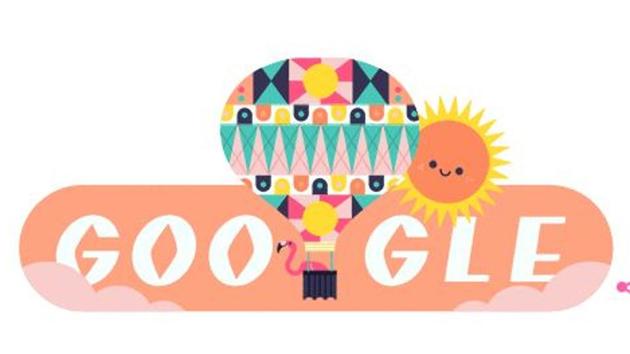Summer Season Google Doodle 2020: Google marks beginning of summer in northern hemisphere with a doodle
Google Doodle today marks the beginning of Summer in the Northern hemisphere. The doodle illustration shows a flamingo in a hot air balloon on a sunny day.
Google Doodle today marks the beginning of Summer in the Northern hemisphere. The doodle illustration shows a flamingo in a hot air balloon on a sunny day. Meteorologically speaking, summer season conventionally comprises the months of June, July and August in the northern hemisphere, and December, January and February in the southern hemisphere.

According to TimeAndDate.com, “On this day, people living north of the Equator enjoy the most amount of sunlight in a single day. The further away from the Equator you are, the more sunlight you receive; the Arctic Circle celebrates sunshine for a full 24 hours today.”
“On the other hand, it also marks the shortest day in the Southern Hemisphere. Here, the winter season has officially begun. The phenomenon is called the Winter Solstice. The further south one is, the shorter the day will be. At the Antarctic circle, there is continuous darkness or twilight around the winter solstice.”
Summer marks the season of soaking in the sun and rejoicing in the vacation-like feeling especially in the colder nations.
How did summer get its name?
First recorded before the 9th Century AD, the word summer comes from the Old English word for the season, sumor. It is related to the Dutch zomer, the German Sommer, and the Sanskrit samā (which means “year”). It was in the 13th Century when Summer became an adjective, and terms such as summer camp, summer school, summer resort became a part of the dictionary around the 1800s.
Summer officially comes to an end at the autumnal equinox, when the sun is at or directly above the equator. The sun moves south of the equator, after the autumnal equinox giving way to a chilly autumn in the Northern Hemisphere and ushering in springtime in the Southern Hemisphere.
What is the difference between equinox and solstice?
The year is divided into four seasons based on the two equinoxes and the two solstices. The summer and winter solstices, June 21 and December 22 respectively, mark the longest and the shortest days of the year. The autumnal and vernal equinoxes, that fall around September 23 and March 21 respectively, mark the day and night of equal lengths. Equinox is derived from the Latin word aequinoctium meaning “equal days and nights.”
This year’s summer solstice will see the Earth playing host to a rare type of solar eclipse. On June 21, the longest day of the year, we will witness a celestial event known as the ‘Ring of Fire’ solar eclipse or annular solar eclipse. The last time these days coincided was in 1982 and the next time these two events will coincide on June 21, 2039.






